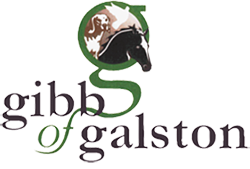Team member, Emma, shares her tips on how to avoid this debilitating condition and what to do to help if your horse or pony has been diagnosed with Laminitis.
What is Laminitis?
Laminitis is the inflammation of the laminae in the hoof. Laminae is the layer of tissue which connects the wall of the hoof to the bone.
Laminitus can cause permanent changes to the bones and structure of a horse’s foot. It is prone to reoccur and can lead to lameness. Sadly, in serious cases, it can mean an animal has to be euthanised.
It is very painful. Imagine having really uncomfortable shoes that hurt your feet and not being able to take them off – you would feel pretty miserable, right?
What causes Laminitis?
Emma says there can be a number different reasons why a horse or pony develops laminitis. Unfortunately, some horses and ponies can be more prone to the condition than others. Other causes may be:
- steroid use
- trauma
- Cushing’s disease
- Equine Metabolic Syndrome (EMS)
- weight
Avoidance tactics
Management is key. A high fibre diet that is low in starch and sugar is essential. Avoid feeds that contain cereals and molasses. There are specific feeds available for those prone to attacks.
If your horse is turned out to graze, Emma recommends:
- the ‘track system’ – using electric fencing to create a track around the field to encourage exercise and limit grazing
- don’t turn out onto frosty grass
- turning out at night and stabling during the day, when sugar levels in the grass are at their highest levels
- soak hay for 24hrs before feeding, this helps to reduce the levels of natural sugars in the grass
- use double netted haynest, to extend eating time.
What to look for
If your horse, or pony, develops a cresty neck or fat pads, take action and adjust their diet.
A laminitic animal won’t want to move and they may develop a ‘leaning backwards’ stance. You might see them trying to shift weight from one foot to the other and it’s very difficult for them to turn in tight circles.
A healthy hoof shouldn’t be warm, so check for any heat in the feet.
It’s a bit tricky, but if you can, feel for a raised digital pulse in the fetlock and postern area.
Treatment
Always get your horse checked by your vet and follow their advice for treatment.
If the vet has recommended box rest, a soft and fluffy deep bed, like Nedz Beds Pro will pack up into the feet, helping to support the foot and reduce pain.
Emma suggests cold hosing their feet to help provide a bit of relief.
